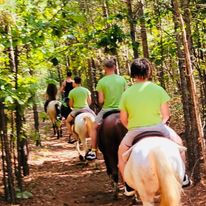
Our Process
Wayne Halfway House serves a diverse population of youth, ranging from those who have been adjudicated dependent and neglected and are involved with a social services agency to those who have been adjudicated delinquent and are involved with a juvenile justice agency.
Wayne Halfway House understands that each youth, regardless of their adjudication status, carries a unique set of needs and strengths. We provide a robust pre-service training program to staff that focuses on treatment and interaction with youth through a trauma-informed lens. For both populations, our behavior management system is based on and underpinned by Cognitive Behavioral Therapy (CBT). CBT is a form of psychotherapy that combines cognitive therapy with behavior therapy to identify faulty or maladaptive patterns of thinking, emotional response, or behavior, which are then replaced with desirable patterns of thinking, emotional response, or behavior. Our comprehensive, holistic approach allows our clinical staff to target the youth’s thinking and behavior, which are addressed during therapy and through the behavior management system to promote more positive behavioral patterns and reactions.
Youth also receive group, individual, and family therapy to address any underlying mental health and substance abuse needs and to facilitate positive communication with their caregivers. The frequency of these services varies based on the youth’s needs. We also have the capability to provide physical health and psychiatric services on-site or in close proximity to our facilities, allowing for all of the youth’s needs to be met in a single setting. Additionally, we offer a robust education program on-site through our own teachers or agreements with local school systems.
-
For our juvenile justice population, we implement a Step-Down Program that allows youth to gradually transition from a hardware-secure setting to a less restrictive environment after achieving certain milestones. These milestones include maintaining appropriate and positive behavior and achieving educational goals, which generally involve attaining a high school diploma or GED. Most youth entering WHH programs have experienced extended periods of truancy or have significant deficits in academic credits.
-
After meeting these milestones, the youth are moved to a different WHH facility to begin post-secondary opportunities, such as college or local technical training, where they are allowed to attend classes in person.
-
Once a youth transitions to a less restrictive environment, they become eligible for work programs. These programs allow them to earn an initial income and build their savings for an apartment or other necessities. WHH work programs have been highly successful. In fiscal year 2023, over 260 individual youth participated in work opportunities, allowing them to earn money they can take with them after they are released.
-
For our social services population, we partner closely with Wayne Provision, which provides a robust network of foster homes that are generally accepting of teenage males — a population that is often difficult to place in a home-like setting. If a youth successfully completes a residential program but is unable to return home, we work with our partners to determine if there is a foster home willing to accept the youth. We also have experience in implementing Supervised Independent Living settings for youth who are receiving Extension of Foster Care Services.
-
In 2023, 102 youth in Wayne Halfway House programs earned a high school diploma or equivalent. In 2024, WHH anticipates graduating 49 students in May and an additional 14 by the end of the summer.
























